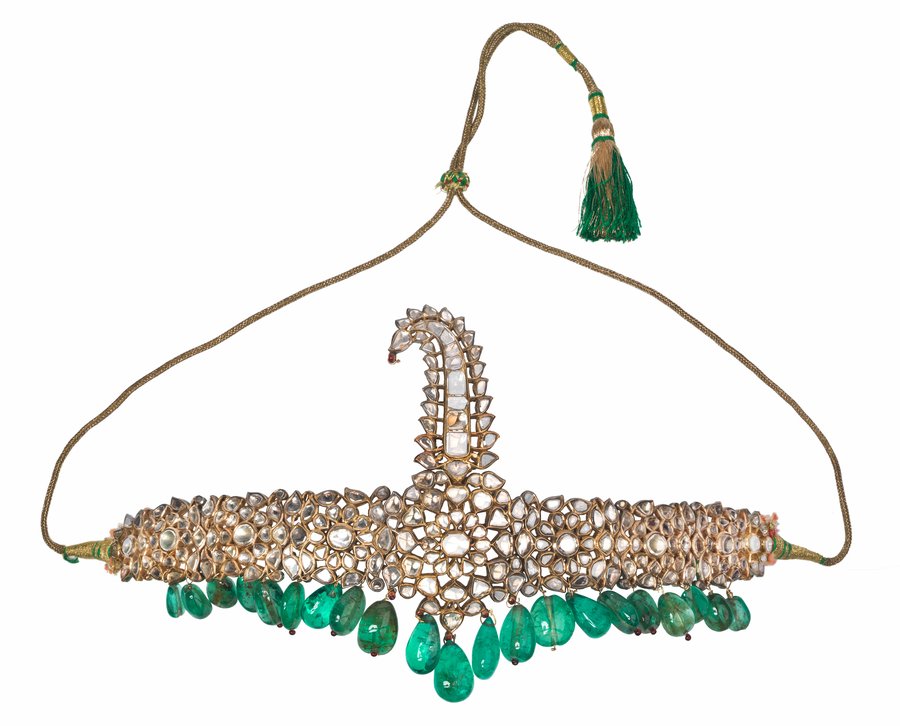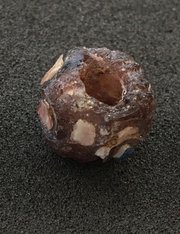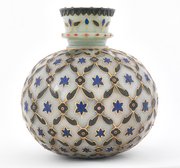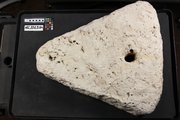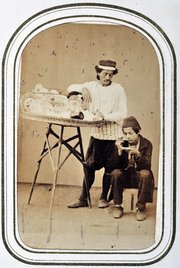
Turban Ornament
Museum of Islamic Art
- Title:
- Turban Ornament
- Production place:
- Jaipur
- Date:
- 1800 - 1899
- Period:
- British Raj
- Title:
- Turban Ornament
- Production place:
- Jaipur
- Date:
- 1800 - 1899
- Period:
- British Raj
- Material:
- Diamond, Emerald, Enamel, Foil, Metallic thread, Solder
- Technique:
- Cutting, Enamelling, Gem setting, Kundan, Hammering, Braiding, Soldering
- Dimensions:
- 10.5 × 23 cm
This jewelled turban ornament, known as a sarpech, consists of ten openwork diamond-set-panels, each held together by hinges or gold cord, surmounted by a plume of tapering form curving to the left and a fringe of twenty-one cabochon cut emerald pendants suspended below. The reverse is decorated with equally rich floral enamelling. Such jewelled turban ornaments formed a vital part of ceremonial Indian dress, and according to Mughal sumptuary laws, could only be worn by royalty, blood relatives of a chief, and honoured individuals. While it is believed that the sarpech derived in form from the 10th century AH/16th century CE jewelled aigrette – a type of ornament that became fashionable in India as a result of European influences – during the 11th and 12th centuries AH/17th and 18th centuries CE it evolved from a single, vertical jewelled plume to an increasingly elaborate, horizontal band. Derived from the composite Persian word sar (meaning head, front or forepart) and pech (screw), such jewelled ornaments acquired special importance as symbols of hierarchical power throughout the Mughal period.
